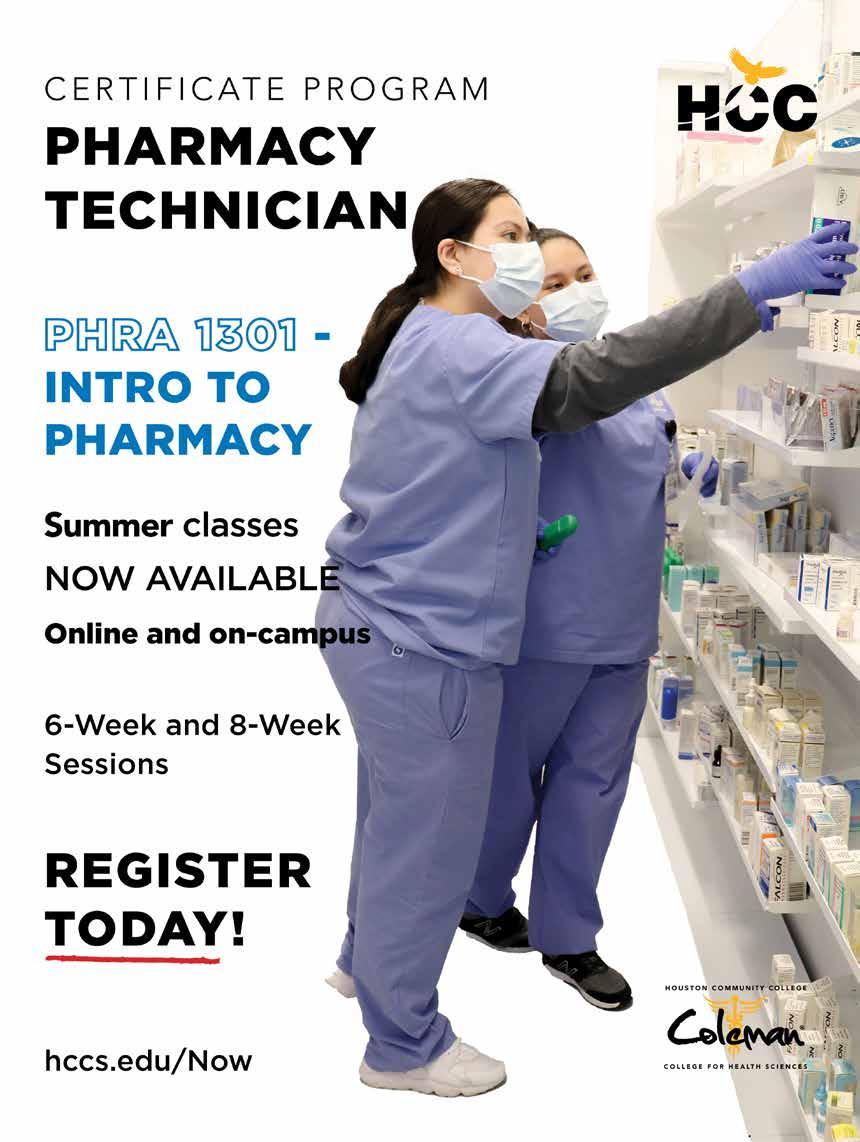Physicians and Private Equity-Owned Practices
By Phillip Miller Debra Wood Merrit Hawkins
Healthcare remains a dynamic and evolving field, with many physicians looking to the security of health system employment, while others are opting for private equity-owned practices.

“There are a lot of benefits to private equity, depending on the specialty,” said Ericka L. Adler, shareholder, practice group manager for health care at the law firm Roetzel & Andress in Chicago.
Adler also reported regional differences in private equity’s interest in practices. These companies often buy up physician practices in a certain geographic area. Then they enjoy economies of scale when purchasing supplies or malpractice coverage and possess greater power when negotiating with payors.
When private equity invests in physician practices, it can relieve the physicians of administrative responsibilities and streamline operations, handle human resources and compliance issues, negotiate payor contracting, bill insurers and let physicians practice medicine. Additionally, most deals offer profit sharing, creating long-term financial benefits as the practices grow or the private equity firm sells.
“In these situations, the physician may lose a little freedom but receives a solid paycheck and gets rid of the headaches of running a practice,” Adler said.
However, she warned that private equity deals are not for everyone and physicians found earlier models controlling.
“For physicians who ran their own practice, it was a culture shock,” Adler said. “Now they are loosening up and acting as partners. It’s increasingly attractive for physicians who never thought they could work for someone else.”
Additionally, many physicians are selling to private equity as a retirement strategy.
“They sell to private equity and end up with a chunk of cash,” Adler said. “They continue to work three to five years and then retire. During that time while working, they receive a
The contributors indicated private equity can contribute to innovation, streamline expenses and may allow practices to offer expanded services and benefits to patients.
AHIP, the health insurers association in Washington, D.C., reported in an issue brief on September 2022 that the COVID-19 pandemic drove a sharp rise in healthcare private equity investment, including for physician practices and other entities.

compensation package.”
Physicians who do not own a practice but are seeking a physician job can also find some benefits to working for a private-equity organization. The growth in private equity for physicians
The Kenan Institute of Private Enterprise at the University of North Carolina at Chapel Hill published a blog in February 2022, reporting private equity healthcare deals remain strong.

A Healthcare Services Report: PE Trends and Investment Strategies by PitchBook of Seattle, released on February 2023, reported there has been significant merger and acquisition activity in primary care and multispecialty networks. However, looking forward, Pitchbook believes deal volumes may decline due to macroeconomic uncertainty and the increase in capital costs.
The types of physician practices attracting private equity Common physician practices
see Practices ...page 14 HOUSTON June Edition 2023 Volume 13 | Issue 6 PRSRT STD US POSTAGE PAID PERMIT NO 1 HOUSTON TX The Brain has a Natural Way to Fight Dementia See pg. 9 Inside This Issue Houston Methodist Awards $4.8 Million See pg. 12 INDEX Legal Matters pg.3 Oncology Research ........ pg.4 Mental Health pg.8 Financial Forecast pg.11
In these situations, the physician may lose a little freedom but receives a solid paycheck and gets rid of the headaches of running a practice
— Ericka L. Adler





Houston Medical Times Page 2 medicaltimesnews.com June 2023 SCAN ME 808 Crawford Street Houston, Texas 77010 346-815-2296 www.ParksideAtDG.com Easy Access to Metro Rail ELEVATED LIVING above the Green
Legal Matters
Texas Legislature Passes New Law
That Limits White Bagging
By Mark S. Armstrong, J.D. Polsinelli, Pc

TheTexas Legislature recently passed HB 1647, prohibiting certain health plans from imposing limitations relating to coverage of clinician-administered drugs for patients with chronic, complex, rare and life-threatening medical conditions. Texas follows several other states that limit white bagging of specialty pharmacy products out of concerns for patient safety, access, clinician burden and drug waste.
Specialty drugs, many of which are very expensive, are prescribed to treat a variety of conditions, including cancer, autoimmune disease, multiple

NowLeasing ClassAOfficeSpace

sclerosis and rheumatoid arthritis. Many specialty drugs also treat rare conditions for which there are limited treatment options. These specialty drugs often have complex handling and distribution requirements. For that reason, many specialty products are not distributed through standard retail pharmacies but are either purchased directly by providers or dispensed by specialty pharmacies.
Traditionally, providers purchased clinic-administered specialty drugs directly from a pharmaceutical wholesaler and were responsible for storing and administering the drugs to their patients. As specialty drug spend increased, payers developed strategies to facilitate cost savings. These strategies changed the typical distribution model where specialty drugs were dispensed by physicians and mandated that the drugs be dispensed through a specialty pharmacy, often
owned by the health insurance provider or pharmaceutical benefits manager (“PBM”). This approach is often referred to as white bagging or brown bagging, depending on who receives the drug from the specialty pharmacy.
White bagging is an arrangement between payers and selected specialty pharmacies to deliver directly to providers at the site of the patient’s medications directly to site of care (typically a physician’s office, hospital-based outpatient department, or home infusion provider). Providers are responsible for receiving the drug delivery from the specialty pharmacy,
unboxing it, and storing it until the patient is on site and ready for administration.
Brown bagging is an arrangement that requires a specialty pharmacy to deliver the clinician administered drugs to the patient at the specialty pharmacy or directly to the patient, following which, the patients are responsible for storing these drugs appropriately until their appointment with a clinician. Patients then bring their specialty drug with them to hand over to a clinician for administration.
Despite the potential for reducing costs, some patient advocates have see Legal Matters...page 14

Houston Medical Times Page 3 medicaltimesnews.com June 2023
+1 713 835 0050
Doug Pack | Sam Hansen
Located in the
District adjacent to world-class Texas Medical Center 1802 Binz St
Parc Binz II is a 5-story Class “A” boutique, office/medical building. The floorplates are approximately 8,600 SF where a tenant can have full floor privileges with minimal square footage. The building features 4,672 SF of retail space on the first floor with surface, garage, and underground parking.
historic Museum
Oncology Research
Calling All Men: Your Health is Your Wealth
 By Jorge Darcourt, M.D., MHCM, Texas Oncology–Houston Medical Center
By Jorge Darcourt, M.D., MHCM, Texas Oncology–Houston Medical Center

For some, summer is a time to take it easy and have some fun. That can mean consuming more sweet or alcoholic beverages and rich foods at barbeques, and spending time in the sun lounging by the pool with less time in the gym.
However, no matter the time of year, we can all use encouragement when it comes to our health. June is National Men’s Health Month, which highlights unique health and wellness challenges as well as helpful advice for men on behaviors that ideally should be adopted year-round. How lifestyle can put men at risk
for cancer
According to the American Cancer Society, one in two men will develop some form of cancer in his lifetime, and one in five will die from cancer. Factors such as genetics, aging, and lifestyle have been linked to many types of cancer. While men cannot change their genes nor prevent growing older, they can change certain behaviors that may put them at a greater cancer risk. Lifestyle changes for men that can help prevent cancer include:
• Not smoking
• Avoiding UV radiation and protecting skin when outdoors
• Getting to and maintaining a healthy weight
• Moderating alcohol consumption
• Cutting down intake of red meat and processed foods
• Consuming plenty of fruits, vegetables, and whole grains
• Being physically active regularly,
up to 150 minutes per week
• Knowing family history of cancer and discussing this with your physician
• Getting regular checkups and health screenings as appropriate for age and family history
Less familiar forms of cancer
affecting men
Men are aware of the cancers that affect them most such as prostate, colorectal, lung, and skin. However, there are other less familiar cancers that are becoming more prevalent in men including bladder, kidney, and esophageal cancer. Awareness is key to early detection and ensuring men adopt healthy habits to lower their
risk.
Bladder Cancer
The fourth most common cancer in men, approximately 62,420 new cases of bladder cancer will be diagnosed in men in the United States in 2023 per the American Cancer Society. Bladder cancer occurs mainly in older individuals, with the average age of diagnosis around 73. Certain risk factors like smoking, exposure to certain industrial chemicals, or not drinking enough fluids can contribute to the development of bladder cancer. The chance men will develop this cancer during their lifetime is about 1
see Oncology Research...page 13
Houston Medical Times Page 4 medicaltimesnews.com June 2023
We’re
Houston Medical Times Page 5 medicaltimesnews.com June 2023
Looking to avoid risk? WE CAN SHOW YOU THE WAY.
taking the mal out of malpractice insurance. Thanks to our national scope, regional experts, and data-driven insights, we’re uniquely positioned to spot trends early. We shine a light on risks that others can’t see, letting you focus on caring for patients instead of defending your practice. It’s a stronger vision that creates malpractice insurance without the mal. Join us at thedoctors.com 5771_TX_HoustonMedTimes_ORM_Nov2016_f.indd 1 10/19/16 12:25 PM
By Ezekiel Sachs, M.D. Neurologist

on one side.
Strokes,
sometimes called brain attacks, are the third leading cause of death in Texas. For anyone experiencing a stroke, time is the most critical factor. Imagine if a stroke happened to a loved one, and you were alone with them. Would you know what to do?

What is a stroke?
A stroke occurs when the blood supply to the brain is blocked or when a blood vessel in the brain bursts. This can quickly damage brain cells and is a medical emergency. Depending on which parts of the brain are affected, the common signs of a stroke include:

• Sudden trouble seeing in one or both eyes.
• Sudden numbness or weakness in the face or arms and legs, especially

• Sudden trouble walking, including dizziness or lack of coordination or balance.
• Sudden severe headache.
• Sudden trouble speaking or understanding.
Recognizing these symptoms, being aware that you are with a potential stroke victim, and understanding that you must take action is critical and possibly lifesaving. The longer the treatment delay, the more brain tissue may be lost. That’s why it’s important to call 911 immediately if you or someone you are with shows any signs of stroke.
How can you help?
F.A.S.T is an easy-to-remember acronym that serves as a quick test to determine whether someone might be experiencing a stroke and needs emergency care:
• F (Face) – Ask the person to smile to determine if one side of their face is drooping.
• A (Arms) – Ask the person to raise both arms to determine if there is difficulty moving one side (e.g., one arm is drifting downward).
• S (Speech) – Have the person repeat a simple phrase to determine if their speech is slurred.
• T (Time) – If you notice even one of these signs, call 911 immediately. No matter what, do not let the victim drive themselves. By calling 911 and getting paramedics on the scene as soon as possible, treatment can begin right away and continue during transport to a hospital or urgent care facility.

What are some ways to help prevent a stroke?
The good news about strokes is that 80 percent are thought to be
preventable. However, according to the Centers for Disease Control and Prevention, once someone has had a stroke, they are at high risk for another. In fact, one in four strokes is recurrent. That’s another reason why it’s important to stay ahead of the risk by treating the contributing factors of stroke, which include diabetes, high cholesterol, high blood pressure, atrial fibrillation (fast or irregular heartbeat) and heart disease.
It is also important to incorporate healthy habits into your lifestyle. Work with your doctor to determine whether you need to change your diet, add more exercise, begin medication, or make other beneficial lifestyle choices.
Chances are, if a friend or loved one shows stroke symptoms, it’s up to you to recognize the signs and get help FAST!
Houston Medical Times Page 6 medicaltimesnews.com June 2023
Call Today! For More Information, scan the QR code or: +1 713 835 0050 Colliers is pleased to announce the availability of Bella Piazza, the newest Class AA Medical office Building in Richmond, Texas. The Building is strategically located near 1093 and the Grand Parkway and offers surrounding water features and abundant retail. Bella Piazza has four (4) floors of medical opportunities for specialist and generalist alike.
NowLeasing ClassAAMedical/Clinical/OfficeBuilding Bella Piazza 24200 Via Mazzini Way Richmond, TX 77406 A Stroke Victim Requires FAST Care How to Help A Loved One Live Through This High-Risk Emergency
Doug Pack | Sam Hansen

Houston Medical Times Page 7 medicaltimesnews.com June 2023 Join 225,000+ medical professionals who get free CME with Texas Health Steps Online Provider Education. Choose from a wide range of courses developed by experts, for experts like you. Quick courses and case studies on topics such as Medicaid guidelines, ethics and mental health, and more are all available 24/7. Learn more at TXHealthSteps.com Content on the Texas Health Steps Online Provider Education website has been accredited by the Texas Medical Association, American Nurses Credentialing Center, National Commission for Health Education Credentialing, Texas State Board of Social Worker Examiners, Accreditation Council for Pharmacy Education, UTHSCSA Dental School Office of Continuing Dental Education, Texas Academy of Nutrition and Dietetics, Texas Academy of Audiology, and International Board of Lactation Consultant Examiners. Continuing Education for multiple disciplines will be provided for some online content. Free CME. Convenient location.
Mental Health
Researchers Discover Positive Effects of Intravenous Ketamine For Treatment-Resistant Depression In Noninferiority Study
Electroconvulsive therapy (ECT) is considered to be the gold standard to treat an episode of refractory depression. However, over the last decade, ketamine has proved itself as a rapid-acting and effective treatment option as well. Researchers from Baylor College of Medicine and the Michael E. DeBakey Department of Veterans Affairs Medical Center studied whether ketamine was noninferior to ECT for treatment-resistant, non-psychotic, unipolar depression patients. The ELEKT-D study is the largest trial to date comparing the real-world effectiveness of ECT versus ketamine. Other participating institutions include the Cleveland Clinic, Yale University School of Medicine, Mount Sinai School of Medicine and Johns Hopkins Medical Institute. Their findings were published in the New England Journal of Medicine.
Researchers enrolled patients

measure, they looked for patients who demonstrated at least a 50% decrease in depression severity scores.

Ketamine had a 55% response rate versus ECT, which had a 41% response rate at the end of the three weeks of treatment. The sample size was the largest study ever done of its kind comparing ECT to another modality, with 170 patients randomized to ECT and 195 patients randomized to ketamine. The Baylor site enrolled almost 100 patients for this trial. ECT was associated with memory disturbance that persisted for a few months post-treatment, while ketamine was associated with transient feelings of disconnection on treatment days.
“Statistically, it was a robust finding showing that ketamine was noninferior to ECT,” said Dr. Sanjay Mathew, primary investigator of the Baylor site and Marjorie Bintliff Johnson and Raleigh White Johnson, Jr. Vice

with major depressive disorder who had been referred for ECT, presenting them the option of enrolling in a comparative trial versus ketamine. ECT requires general anesthesia for a brief period of time, while the 40-minute ketamine infusion is a low dose of a commonly used anesthetic in which patients are awake. They compared the effects of both treatment options by studying patients randomized in two groups: ECT and ketamine. Patients in the ECT arm received a standard course of three weeks of ECT, which was given to them every Monday, Wednesday and Friday each week. Patients randomized to ketamine received it twice per week for three weeks. The patients were evaluated several days after the three-week period with a commonly used questionnaire for depression. As the primary outcome
Chair for Research and professor in the Menninger Department of Psychiatry and Behavioral Sciences at Baylor. “This study can give clinicians and patients confidence that ketamine is a reasonable and safe alternative to ECT, at least for the short-term management of treatmentresistant, non-psychotic depression.”
Mathew and his team plan to further investigate the comparison between ECT and ketamine among suicidal patients. The patients in the current study were not acutely suicidal and the majority were treated as outpatients.
“ECT is often used for suicidal patients in the inpatient setting, so now we need to do a large-scale comparison of ketamine versus ECT for our most critically ill and suicidal patients,” he said.
Houston Medical Times Page 8 medicaltimesnews.com June 2023 FOR LEASE MEDICAL SPACE AVAILABLE AT A COMPETITIVE RATE 281-484-1111 4 Oaktree Street, Friendswood TX 77546 Other locations available for Lease and Sale. Up To Six Months Free Rent janet@silkroadproperties.com silkroadproperties.com
Brain Has Natural Way to Fight Dementia, UTMB Study Suggests
Autophagy Recycles, Cleans ‘Garbage’ In Brain Cells
Some people who have Alzheimer’s disease pathology never get dementia because they have a protective biological mechanism working in their favor, a new study suggests.
Researchers at the University of Texas Medical Branch studied postmortem brains and found that people who presented with brain pathology consistent with fully symptomatic Alzheimer’s disease— but not dementia—also had preserved autophagy, a physiological system that allows cells to recycle or eliminate junk and clutter.
“This is significant, because it means that our brain is not necessarily a victim in the battle against Alzheimer’s,” said Dr. Giulio Taglialatela, the corresponding author,

a neurology professor and the director of Mitchell Center for Neurodegenerative Diseases.



Alzheimer’s & Dementia: The Journal of the Alzheimer’s Association published the research team’s paper May 16. The study found that non-demented Alzheimer’s brains had preserved autophagy and reduced levels of Tau, a toxic protein that accumulates.
“We describe that these individuals have higher efficiency in removing the toxic Tau proteins,” said Dr. Anna Fracassi, one of the authors and a neurology postdoctoral fellow at UTMB.
Alzheimer’s disease causes dementia, and scientists think that an accumulation of certain toxic products is why. Autophagy can clean out these toxic products at the cell level.

“Imagine a garbage service,” Taglialatela said. “Cells and neurons have to get rid of anything which cannot be recycled or reused within the cell.”

Autophagy is a normal process in human cells, but in people with dementia because of Alzheimer’s disease, autophagy doesn’t do that job as well as it once did.
“In dementia, there’s a dramatic reduction of this ability of autophagy,” Taglialatela said. “That decline that is normally observed in dementia in Alzheimer’s patients does not occur in these people who are resilient.”

The cause of the vast majority

of sporadic Alzheimer’s cases is not known yet, but it is not genetic and any correlation with diet or environment is moderate at best.


Even so, this new research indicates a way more people might prevent dementia. Researchers can now look at ways to induce autophagy for therapeutic treatment.
“This illustrates that there is a natural way for our brain to react appropriately to the pathology associated with dementia in Alzheimer’s disease,” Taglialatela said. “There is a natural way for our brain to perfectly adapt to the challenge and win.”
Houston Medical Times Page 9 medicaltimesnews.com June 2023 9779 Fannin Railway, Houston, TX 77045 | 346.263.0129 | www. CharlestonAtFanninStation.com LUXURY 1 & 2 BEDROOM APARTMENT HOMES 346.263.0129 • Elite Penthouse Suites Available* • Downtown Houston, Pool & Courtyard Views • Many State-Of-The-Art Amenities, including an Elegant Clubroom w/ Fireplace, Social Lounge w/ Catering Kitchen! • Stop By Or Visit Us Online Today! NOW LEASING BRAND NEW
Racial Disparities Exist in Use of Statins to Reduce Heart Disease Risk
Black and Hispanic Adults are Significantly Less Likely to Take Statin Drugs for Preventive Measures Compared with White Adults
Black and Hispanic adults at risk of developing cardiovascular disease are less likely to take statin drugs than white adults with the same risk factors, UT Southwestern Medical Center researchers reported in JAMA Cardiology.
Age, sex, blood pressure, cholesterol, diabetes, and smoking status all increase a person’s likelihood for cardiovascular disease. Researchers found that even after adjusting for these risk factors, data showed that 37.6% of white participants used statins compared with 23.9% of Hispanic participants and 23.8% of Black participants. The study also showed that having health insurance and regular access to routine health care were associated with higher statin use.
“This adds to the known racial


and ethnic disparities already highly prevalent in heart disease,” said Ambarish Pandey, M.D., Assistant Professor of Internal Medicine in the Division of Cardiology at UT Southwestern, who is an expert on disparities in cardiovascular disease and the lead author of the study. “These findings have the potential to affect how we screen for and treat people who do not have heart disease but may have risk factors such as high blood pressure, high cholesterol, and smoking.”
Statins, which include atorvastatin (Lipitor) and simvastatin (Zocor), are among the most prescribed drugs in the U.S. In 1985, UT Southwestern researchers Michael S. Brown, M.D., and Joseph L. Goldstein, M.D., were awarded the Nobel Prize in Physiology or Medicine for their
discovery of the LDL receptor and its role in cholesterol metabolism, which led to the drug’s development.
Previous research has established that rates of cardiovascular disease – as well as many individual risk factors –are higher among Black and Hispanic adults than white adults. Due to those disparities, race and ethnicity are factors in a person’s individual risk of developing heart disease.

Previous studies have found lower statin use among Black and Hispanic adults who already have established heart disease or diabetes. The new study is the first to look at statin use across races and ethnicities in people
with a broad range of risk factors.
Dr. Pandey and collaborators at the University of Utah analyzed data on a select group of people who completed the National Health and Nutrition Examination Survey (NHANES) between January 2013 and March 2020. The subset of participant records selected for the analysis was designed to represent the U.S. population. Dr. Pandey said the disparities found in statin use across race groups were independent of risk factors, including age, sex, and LDL cholesterol levels.
“The rates of statin use in those see Disparities...page 13
Houston Medical Times Page 10 medicaltimesnews.com June 2023 2319 N. GRAND BLVD., PEARLAND, TX. 77581 www.hmps.net | 281-485-2500 WHAT WE OFFER: • Integrating the Montessori method into the public school curriculum • Currently offering Pre-K thru 4th • Open enrollment until positions fill • Comprehension Stem Program • Character & Leadership Development • High Tech – 7 computers per classroom
Financial Forecast Pitfalls of Reverse Mortgages
 By Grace S. Yung, CFP Midtown Financial Group, LLC
By Grace S. Yung, CFP Midtown Financial Group, LLC




Areverse mortgage is a type of loan that allows homeowners to borrow against the equity in their homes while still living in them. Instead of making monthly payments to a lender, the lender pays the borrower in a lump sum, monthly payments, or as a line of credit. This type of loan may sound like a good idea for older adults who want to supplement their income, but there are several reasons
Many people who take out a reverse mortgage do not fully understand the terms and conditions of the loan, which can lead to confusion and financial hardship down the road. For example, borrowers may not realize that they are responsible for paying property taxes and homeowners insurance even after they have taken out the loan. This can be a significant burden for older adults who may not have the means to pay for these expenses on their own.
In addition to being expensive and complex, reverse mortgages can also be risky. If a borrower outlives the loan, they may be forced to sell their home or repay the loan with
You’re
why reverse mortgages are not always a good option and why people need to be careful.
One of the main reasons why reverse mortgages are not a good option is that they can be very expensive. The fees and closing costs associated with a reverse mortgage can be much higher than those associated with a traditional mortgage. The interest rates on reverse mortgages are often higher than those on traditional mortgages, which means that borrowers end up paying more over time. This can be a significant burden for older adults who are already on a fixed income and may not have the means to pay for unexpected expenses.
Another reason why people need to be careful when considering a reverse mortgage is that they can be complex and difficult to understand.
interest. This can be a significant burden for older adults who may not have the means to repay the loan. Furthermore, if the value of the home decreases over time, borrowers may end up owing more on the loan than the home is worth. This can leave borrowers in a difficult financial situation and can even lead to foreclosure.
It is also important to note that reverse mortgages are not the only option for older adults who want to supplement their income. There are other ways to tap into the equity in a home, such as selling the home or taking out a home equity loan or line of credit. These options may be see Financial Forecast ...page 13
• Credit scores as low as 680
• Up to 100% financing with no mortgage insurance

• Primary purchase and refinance options only

• Fixed- and adjustable-rate options
• State restrictions apply*
Eligible borrowers include Medical Doctors who have a minimum of a M.D., D.O., D.D.S, or D.M.D degree and an employment contract. Medical doctors including Dentists, Podiatrists, Ophthalmologists are permitted. Veterinarians are permitted.

Reach

Houston Medical Times Page 11 medicaltimesnews.com June 2023
PRT-00000-0000 Tracking #0-000000 (Exp. 00/00) The Financial Consultants at <DBA Name> are registered representatives with, and securities and advisory services are offered through LPL Financial (LPL), a registered investment advisor and broker-dealer (member FINRA/SIPC). Insurance products are offered through LPL or its licensed affiliates. [Credit Union name] and [DBA name] are not registered as a broker-dealer or investment advisor. Registered representatives of LPL offer products and services using [DBA name], and may also be employees of [credit union name]. These products and services are being offered through LPL or its affiliates, which are separate entities from, and not affiliates of, [credit union name] or [DBA name]. Securities and insurance offered through LPL or its affiliates are: DBA Name Located at Institution Name Agent Name, Desig 1, Desig 2, Desig 3, Desig 4 Title 1 Title 2 or Insurance Lic#xxxxxxxx Address line 1 Address line 2 City, State XXXXX (000) 000-0000 xExt or Description (000) 000-0000 xExt or Description (000) 000-0000 xExt or Description email.address@email.com www.webaddress.com Your Logo Here Not Insured by NCUA or Any Other Government AgencyNot Credit Union GuaranteedNot Credit Union Deposits or Obligations May Lose Value PROOF LOCKUP A V2 MKT-06048-0122 Tracking #1-05228930 A successful retirement in the future can often depend on having a solid plan now. If your money isn’t working as hard as you are, it may be time to act—there are no do-overs in retirement planning. Now is the time to consider developing a strategy that can help you work toward your financial goals. I specialize in providing comprehensive, personalized financial guidance with the goal of maximizing every remaining moment of the retirement countdown. PLAN WISELY. YOU WON’T GET A DO-OVER. Call today to learn more or to schedule a consultation. S laicnaniF nwotdiM dna laicnaniF LPL .CPIS/ARNIF rebmeM ,rosivda tnemtsevni deretsiger a ,laicnaniF LPL hguorht dereffo secivres yrosivda dna seitiruce G.seititne etarapes era CLL ,puor nwotdilaicnaniF,puorGCLLM G.SecarYgnuC®PF MrotceriD gnigana 3081 .etS ,.tS amabalA 553 Hnotsuo TX 7 8907 7 3389-553-31 O ecfif 1 9683-464-558- T eerF g moc.lpl@gnuy.ecar wmoc.gfnwotdim.ww
100% financing available for doctors
making a difference; now it’s our turn. Medical doctors don’t have to wait to buy a home. With up to 100 percent financing options available and no private mortgage insurance, you can be a homeowner now.
Loan amounts up to $2M
Program details: •
Scan Me
out today! I am authorized to do business in the state of Texas. Guild Mortgage Company; NMLS #3274; Equal Housing Opportunity; www. nmlsconsumeraccess.org. All information, loan programs & interest rates are subject to change without notice. All loans subject to underwriter approval. Terms and conditions apply. Always consult an accountant or tax advisor for full eligibility requirements on tax deduction. *This program is not available in all states. For more information, contact a Guild Mortgage loan officer or visit: https://www.guildmortgage.com/mortgage-loans/doctor-program/. Anna Babineaux Branch Manager NMLS ID# 266791 306 W Edgewood Dr., Suite F Friendswood, TX 77546 O: 832.569.2878 | M: 713.907.5365 ababineaux@guildmortgage.net Apply Online guildmortgage.com/annababineaux
Houston Methodist Awards
$4.8 Million Through Its
Diversity, Equity & Inclusion Grant Program


Funds Will Support 50 Organizations in The Greater Houston Area
Houston Methodist announced today that it has awarded more than $4.8 million in community grants to 50 Houston-area nonprofit organizations through the Houston Methodist Diversity, Equity & Inclusion Grant Program. This program supports community initiatives focused on addressing the root causes of health inequities experienced by social, racial and ethnic minorities, including the intellectually and developmentally disabled, women, senior citizens,
and building healthy neighborhoods and can include program and operating resources serving broader minority communities.
“We’re proud to support the critical work these 50 non-profits are focused on to close the health and social disparity gaps that exist among minority groups in the Houston area,” said Ryane Jackson, vice president, community benefits at Houston Methodist. “For the Social Equity Grant, this is the first year we have pivoted to focus those dollars
the LGBTQ+ community, people experiencing homelessness, foster youth and more.
Since its inception in 2021, 83 nonprofit organizations in the Greater Houston area have benefited from more than $11 million in Houston Methodist DEI Grant Program funds. In 2023, the program will support more than 51,000 people in the community through 24 healthy neighborhood programs, 16 educational empowerment programs and 14 economic programs. Two types of grant funding make up the DEI grant program — the Social Equity Grant awards funding to remove barriers to health equity impacting racial and ethnic minorities through economic empowerment initiatives, and the DEI Grant provides support focused on educational empowerment
solely on economic empowerment. We know there is a direct correlation between economic stability and health outcomes. Without livable wages or employer backed insurance, access to health care can be limited. If we can help those in underserved communities obtain employment and increase their wages in a short amount of time, then we can provide immediate and meaningful change that can potentially be felt for years to come.”
In addition to the DEI Grant Program, in 2023 Houston Methodist provided more than $6.8 million to local nonprofits working to provide affordable, high quality access to health care and mental health services to the financially indigent in the Greater Houston Community.

Houston Medical Times Page 12 medicaltimesnews.com June 2023
Oncology Research
Continued from page 4
Kidney Cancer
Kidney cancer is twice as common in men than women, according to the American Cancer Society, with more than 52,300 men to be diagnosed in the United States in 2023. Rare in people younger than 45, the average age of diagnosis is between 65 and 74. Risk factors include smoking, obesity, high blood pressure, race, use of certain medicines, and exposure to
Disparities
Continued from page 10
at the highest risk for cardiovascular disease is quite low overall, but especially among Black and Hispanic adults. Statins are cheap and effective at the prevention of heart disease, so this is definitely a large missed opportunity,” said Joshua A. Jacobs, Pharm.D., Cardiology Clinical
environmental toxins. Symptoms vary by patient, with some having little to no symptoms in the early stages, or blood in the urine and flank pain at later stages.
Esophageal Cancer
Men are three to four times more likely to develop esophageal cancer than women. In Texas, an estimated 1,350 new esophageal cancer cases are anticipated in 2023, and 1,010 Texans are expected to die. According to the

Texas Department of State Health and Human Services, the highest incidence rate of esophageal cancer is in males living in rural areas. The seventh most common cause of cancer death among men, risk factors for esophageal cancer include smoking, alcohol use, and obesity as well as Gastroesophageal Reflux Disease (GERD), which occurs when stomach acid flows up to the esophagus.
If you – or the men in your life
– aren’t making health a priority, consider this National Men’s Health Month a great time to get on track. Set up an appointment with your healthcare provider and be sure to schedule important annual screenings. Pay attention to your body and incorporate healthy habits every day. As the saying goes, “your health is your wealth.”
Pharmacist at the University of Utah who is the first author of the study.
The new results, Dr. Pandey added, “help identify health care access as a target for interventions in order to shrink the racial and ethnic gap for preventive cardiovascular care.”

The next step would be to
Financial Forecast
Continued from page 11
more cost-effective and less risky than a reverse mortgage, depending on the individual circumstances.
Preparing for retirement is an essential step towards financial security and independence in one’s golden years. Here are some suggestions for saving for retirement and alternative income strategies that can help individuals avoid the need for a reverse mortgage to supplement their retirement income:
1. Start saving early.
2. Live within your means
3. Work with a CFP professional and invest wisely.
4. Consider alternative income options.
5. Social Security maximization strategies.
6. Downsize or re-locate.
7. Work part-time.
These suggestions and proactively saving for retirement can help reduce the need for a reverse mortgage to supplement your retirement income later in life. Before taking out a reverse mortgage, it is important to carefully consider all the options and to fully understand the terms and conditions of the loan. It may also be helpful to consult with a CERTIFIED FINANCIAL PLANNER practitioner, an attorney or other trusted professional to determine the best course of action.
study the effectiveness of different interventions in increasing statin use among minority communities. “This way we can find strategies that work for the communities most affected by the disparity,” he said.
Houston Medical Times Page 13 medicaltimesnews.com June 2023
in 28.
Ambarish Pandey, M.D., Assistant Professor of Internal Medicine in the Division of Cardiology at UT Southwestern, is an expert on disparities in cardiovascular disease.
Practices
Continued from page 1
of interest to private equity include gastroenterology, urology, cardiology, radiology, obstetrics and gynecology, and hematology and oncology. However, primary care and other specialties also may be able to sell to private equity firms.
“Private equity has to borrow the equity and pay it back to investors,” Adler said. So, they have to improve or grow the practice to make more profit. That may include reducing overhead, decreasing malpractice rates, negotiating better payor contracts, especially if the firm owns multiple practices.
Adler added that private equity firms look for practices with room for growth, no malpractice claims and compliance with regulators.
“Private equity in certain parts of the country, most especially in the Southeast and the West, is playing a gigantic role in organizing small primary care practices into larger entities, giving them the resources, the sophistication, and protection from the vagaries, like the next pandemic, and better information about their own cost structure,” said David Nash, MD, MBA, founding dean emeritus
Leagl Matters
Continued from page 3
expressed concerns about the impact of white bagging on patient safety, access, clinician burden and drug waste. In addition, some clinicians contend that the practice of white bagging can cause delays that lead to disease progression. HB 1467 seeks to protect patient choice and safety by limiting white bagging of clinicianadministered drugs.
Specifically, HB 1647 generally prohibits a health benefit plan for an enrollee with chronic, complex, rare or life-threatening conditions from:
1. Requiring clinician-administered drugs to be dispensed only by certain pharmacies or only by pharmacies participating in the health benefit plan’s network,
2. Limiting or excluding coverage for clinician-administered drugs based on the enrollee’s choice of pharmacy or because the drug was not dispensed by a pharmacy that participates in the health benefit
and the Dr. Raymond C. and Doris N. Grandon professor of Health Policy at the Jefferson College of Population Health in Philadelphia.
Adler reported private equity firms are showing a huge interest in the Midwest for obstetrics and gynecology, dermatology and aesthetics practices, but not for primary care practices.
“Anesthesiology is a major area for private equity investors because of its high demand,” said Alex Milligan, co-founder and chief marketing officer of NuggMD in Marina del Rey, California. “Investors are seeking opportunities that provide high patient intake and the need for rapid expansion.”
Milligan explained that anesthesiology services are needed for both life-saving invasive treatments and more minor healthcare interventions.
“Millions of inpatient and outpatient surgeries occur each day, making it a high capital-generating industry,” Milligan added. “In turn, investors are able to see profits much sooner than, say, a general practice.”
Considering private equity?
Private equity for physicians has changed during the past 10 years, Adler said. Now, more equity firms include physician governance boards in their deals. Physician jobs may include giving the equity firm suggestions
plan’s network, if the clinicianadministered drug is otherwise covered by the plan,
3. Requiring a physician of health care provider to bill for or be reimbursed for the delivery and administration of the clinicianadministered drugs under the pharmacy benefit instead of the medical benefit without:
a. informed consent of the patient, and
b. a written attestation by the patient’s physician or health care provider that a delay in the drug’s administration will not place the patient at an increased health risk, or
4. Requiring that an enrollee pay an additional fee, higher copay, higher coinsurance, second copay, second coinsurance or any other price increase for clinician-administered drugs based on the enrollee’s choice of pharmacy or because the drug was not dispensed by a pharmacy that participates in the health benefit plan’s network.
about staffing or equipment or how to continue the growth.
There can be tax consequences and real estate involvement, so physician-owners are encouraged to surround themselves with a knowledgeable team if considering an offer from a PE firm.
“There is a lot to think about,” said Adler, and everything should be addressed before signing a letter of intent.
Private equity for physician practices will remain common and offer physicians who have traditionally worked in either acute care hospitals or private practices a third option.
“A steady paycheck and no administrative hassles is really the biggest benefit [of the PE model],” Adler added. “It can be a good option for doctors who are not the type to manage their own practice, but want to work in an ‘independent practice.’ Typically, the compensation, benefits and opportunity for bonuses can also be greater than other comparable employers.”
“There is no slowdown in private-equity deals,” she said. “There are more now than ever before.
The foregoing limitations on coverage for certain clinician-administered drugs apply only if the patient’s physician or health care provider determines that:
1. A delay of care would make disease progression probable, or
2. The use of a pharmacy within the health benefit plan’s network would:
a. make death or patient harm probable,
b. potentially cause a barrier to the patient’s adherence or compliance with the patient’s plan of care, or
c. because of the timeliness of the delivery or dosage requirements, necessitate delivery by a different pharmacy.
HB 1647 is currently awaiting Governor Abbott’s signature. Once signed, the new law will be effective September 1, 2023.
Houston Medical Times Page 14 medicaltimesnews.com June 2023 HOUSTON Published by Texas Healthcare Media Group Inc. Director of Media Sales Richard W DeLaRosa Senior Designer Jamie Farquhar-Rizzo Web Development Lorenzo Morales Distribution Robert Cox Brad Jander Accounting Liz Thachar Office: 713-885-3808 Fax: 281-316-9403 For Advertising advertising@medicaltimesnews. com Editor editor@medicaltimesnews.com Houston Medical Times is Published by Texas Healthcare Media Group, Inc. All content in this publication is copyrighted by Texas Healthcare Media Group, and should not be reproduced in part or at whole without written consent from the Editor. Houston Medical Times reserves the right to edit all submissions and assumes no responsibility for solicited or unsolicited manuscripts. All submissions sent to Houston Medical Times are considered property and are to distribute for publication and copyright purposes. Houston Medical Times is published every month P.O. Box 57430 Webster, TX 77598-7430




Houston Medical Times Page 15


Houston Medical Times cookiedelivery.com Warm cookies, baked-to-order, delivered to your door.













 By Jorge Darcourt, M.D., MHCM, Texas Oncology–Houston Medical Center
By Jorge Darcourt, M.D., MHCM, Texas Oncology–Houston Medical Center





















 By Grace S. Yung, CFP Midtown Financial Group, LLC
By Grace S. Yung, CFP Midtown Financial Group, LLC


















